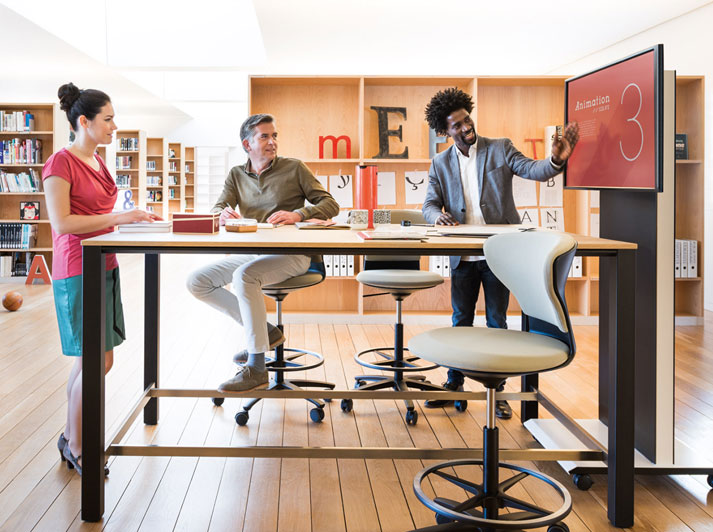
Create a High Performing Workplace
Traditionally, we employed staff and allocated them a desk with its associated space requirement. This process leads to an ever increasing need for space and increased expense.
We now realise that true innovation in the workspace comes about through collaboration. Break out areas are now widely acceptable, the baby boomer bosses are beginning to believe that there really are other ways to work, that are more effective than being planted at your workstation staring at a screen communicating by email.
Thankfully, we killed the ‘cubicle’ a few years ago as the norm for open plan office space, but now the challenge is to balance the workplace between spaces for Community, Collaboration, and Concentration. We need them all, but the boss thinks this is going to be really expensive to implement, right?
Not so, but what has to be considered is how we now allocate space in the workplace. Many larger organisations can look into their seats/person ratio for their more mobile employees. Call it hot-desking if you like, but why create a fresh workplace for every worker when half of them are out of the office most of the time. Depending on the habits of the workforce you can reduce your seats/person ratio to around 8/10. That saves you 20% of your real estate, which you can then convert to innovative collaborative spaces.
The focus now is on well-being in the workplace. By clever deployment of workstation and locker systems you can reduce your business footprint, increase the productivity of your teams and make a significant contribution to your bottom line.
Do not fall in to the trap of deciding you need space for your community of workers to interact and add that on to your traditional real estate cost. Office design is changing in the most radical way right now, and the challenge for employers is to keep up, to provide workspaces that work for their new workforce and not lose staff to the more progressive employers.

By John Duffin
John has over 30 years experience in commercial office fitout and management. For questions relating to this article please contact us on Ph.09.3091710



